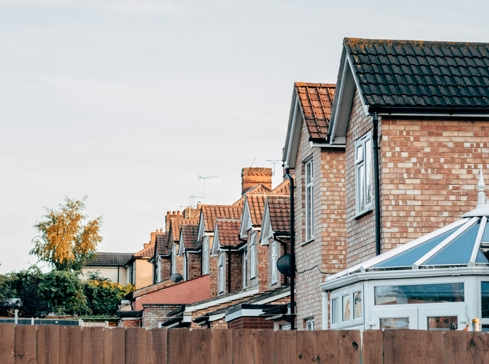Reinforced Autoclaved Aerated Concrete (RAAC) is failing in many buildings. It is currently making the news headlines, not least because it affects several buildings maintainable at public expense.
At the very least, defective reinforced autoclaved aerated concrete will be costly to remediate, but at worst, it could pose a threat to life.
A key legal question is: who could be liable to pay for reinforced autoclaved aerated concrete remediation works?
Reinforced autoclaved aerated concrete was commonly used as a cheaper alternative to standard concrete throughout the late 1950s up to the late 1980s. During the 1990s, concerns arose that reinforced autoclaved aerated concrete panels were not performing as anticipated initially because of corrosion of the internal reinforcement.
Investigations concluded that reinforced autoclaved aerated concrete had a usable life span of around 30 years, subject to appropriate maintenance works.
It would appear evident that sufficient maintenance works were not undertaken and/or that reinforced autoclaved aerated concrete was not replaced before its end of life. This means that it is now failing and must be replaced. Therefore, there is little choice but to undertake expensive remediation works or risk facing criminal prosecution or worse.
This reinforced autoclaved aerated concrete "crisis" has occurred in a climate where building safety is increasingly in focus, following the tragic loss of life during the Grenfell Tower fire in 2017 and the implementation of the Building Safety Act in 2022.
Any party facing the costs of remediation works will understandably be considering if there are third parties from whom they can recover the costs of remedial works.
These third parties could include:
- (i) the party that commissioned the building works,
- (ii) the design consultant,
- (iii) the builder/contractor,
- (iv) landlords with repairing obligations, and
- (v) any parties involved in the management of the building.
Establishing a Breach of Contract
The builder or contractor is obliged to ensure satisfactory materials are used. Therefore, the party that specified using reinforced autoclaved aerated concrete was obliged to use 'reasonable skill and care' when specifying materials. The issue would be whether the use of reinforced autoclaved aerated concrete was wrong when it was specified.
There would need to be a body of expert evidence to prove this. The law will not look at these issues with hindsight. The focus would be whether reinforced autoclaved aerated concrete was a satisfactory material at the time of its specification and use. If not, the contractor could be in breach of its contractual obligations and be liable for damages.
Currently, there is no suggestion that reinforced autoclaved aerated concrete should never have been used or that it was known that it was not a satisfactory product. Instead, it is widely asserted that the current crisis has arisen because of delays in resolving the problems through maintenance or replacement.
Establishing negligence
The design consultant or design manager that specified the use of reinforced autoclaved aerated concrete would have owed a duty of care - they'd be obliged to use reasonable skill and care to ensure that the materials specified were fit for their intended purpose.
Similar to a breach of contract, hindsight views on this will not be relevant, and the focus will be on the specific point in time.
No information suggests that reinforced autoclaved aerated concrete was the wrong material to specify, either at the time or now.
Defective Premises Act 1972
One of the effects of the Building Safety Act was to extend the period in which claimants could bring claims under the Defective Premises Act 1972 ('the DPA') to 30 years, retrospectively, thereby permitting claims as far back as 1993. However, the Defective Premises Act only relates to 'dwellings'.
To succeed in a claim under the Defective Premises Act, a claimant must establish that the dwelling was unfit for human habitation when it was completed.
Defective Premises Act claims have succeeded where that breach was present but unknown at the time of completion, for example, a hidden breach of the then-current Building Regulations. However, there is no suggestion that the use of reinforced autoclaved aerated concrete was a breach of historic Building Regulations; rather, it appears that it has performed as anticipated (by the 1990's investigations).
The landlord and tenant perspective
A lease will allocate responsibility to keep the relevant property in repair. Commonly, a landlord is responsible for the repair of the structural and external elements of a building.
It is settled law that the obligation to 'keep' a premises in repair is only engaged if there is a physical deterioration in the part of the building which is subject to the repairing obligation.
Following this, a landlord subject to an obligation to keep in repair the parts of a building in which reinforced autoclaved aerated concrete is located is not automatically obliged to repair or replace those parts of the building merely because it is in situ. However, the position will immediately change when the reinforced autoclaved aerated concrete condition deteriorates.
If a landlord failed to keep reinforced autoclaved aerated concrete in repair, such that its tenant was prevented from using the demised premises, then this breach would likely be a breach of the landlord's contractual obligations, resulting in it being vulnerable to claims by the tenant for damages. The landlord may also void its insurance policy, whilst the tenant could bring a claim for 'performance', which would compel the landlord to undertake the repair works.
The Building Safety Act 2022
Amongst other things, the Building Safety Act enables tenants to issue court proceedings against their landlords, the original developers, contractors and their 'associated' companies, compelling them to contribute towards the costs of remediation works. Alternatively, to compel the current landlord to undertake the remediation works. A tenant may bring either of these claims as a 'building safety risk', which includes the 'collapse of the building or any part of it'.
A landlord may be liable whether or not that landlord was responsible for installing the failed reinforced autoclaved aerated concrete.
A tenant may only bring such a claim regarding a 'relevant building', requiring the building in question to contain at least two dwellings. This puts many buildings beyond scope, most notably schools or law courts.
Even if a landlord is not vulnerable to claims under the Building Safety Act, they may still be required to undertake repair works under the contractual provisions of the relevant lease. If so, the Building Safety Act may prevent a landlord from recovering the costs of the remediation works under the Service Charge regime. Again, however, not all buildings and tenants will be in its scope.
Limitation issues
The law prescribes limitation periods for 'causes of action', meaning that legal proceedings must commence within the appropriate limitation period. Therefore, any potential claim may be subject to arguments of limitation and 'statute barred'.
In claims for a breach of contract, the claimant has six years for a simple contract or 12 years for a contract by deed from when the cause of action accrued to commence legal proceedings. Any claim for a breach of contract, in respect of the original construction of the building, is likely to be statute-barred. There may be contractual provisions, such as a guarantee, that could assist a claimant to pursue a claim long after the works have been completed, but these will be case-specific.
Regarding a failure to comply with the contractual obligations of a lease, the position could be very different. For example, if a party was obliged to keep in repair that part of the building, which included reinforced autoclaved aerated concrete, and it did not. That party would be vulnerable to claims not statute-barred, given that the breach of contract would likely have occurred within the limitation period. Further, the Building Safety Act is primarily concerned with the status of the building as of today's date, and it extends the limitation period under the Defective Premises Act, as discussed above.
For negligence claims, the limitation period is either six years from the date of damage caused (by the negligent act or omission) or three years from the date the damage was (or should reasonably have been) discovered. This is subject to a longstop period of fifteen years from the date the works were originally completed. There will, therefore, be scope for claims in negligence for recently undertaken remediation works and/or professional services, but claims relating to the original construction will likely be statute-barred.
Summary and our view
The current legal issues are not that reinforced autoclaved aerated concrete is (or was) inherently unsafe, but that problems have arisen because the buildings suffering from failing reinforced autoclaved aerated concrete have not been adequately maintained or the reinforced autoclaved aerated concrete removed and replaced before its end of life.
Unless it is subsequently shown that reinforced autoclaved aerated concrete was never a satisfactory product, claimants will likely struggle to prove that the original design party and works contractor are liable to pay damages.
As such, the burden of paying to repair or replace failing reinforced autoclaved aerated concrete will fall to the parties under the relevant lease, or where the Building Safety Act applies (and not all buildings/tenants are in scope), the landlord is vulnerable.
Given the possibility of danger to life, parties must not delay reviewing whether to take action if they know or suspect that reinforced autoclaved aerated concrete is installed in their building.
Legally speaking, to determine a party's liability, detailed investigations must be undertaken to determine the condition of the reinforced autoclaved aerated concrete and, if it is found to be failing, to devise a scheme of remediation works. Only then can we;
- (i) calculate the cost/ loss, and
- (ii) assess which third parties may be liable to pay or contribute to the cost of the works (or undertake them).
This will require an examination of the contractual and statutory provisions specific to each matter and will require a team of professionals, including legal advisors and building surveying experts.




